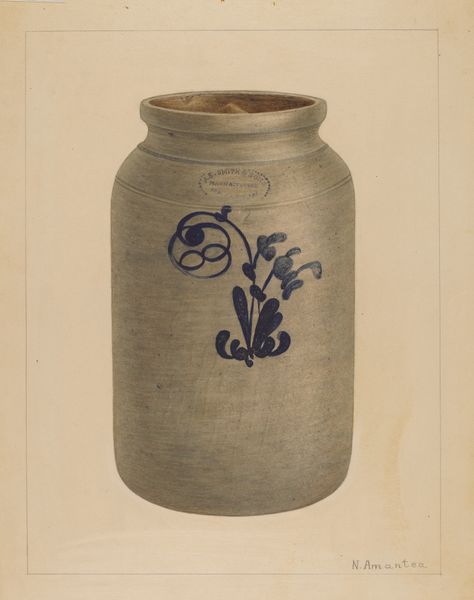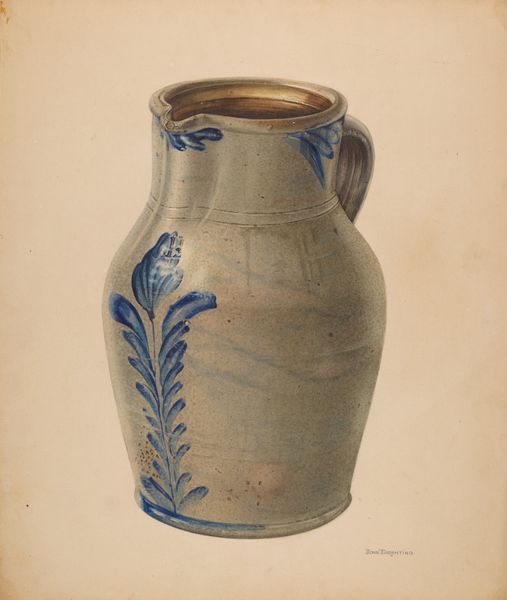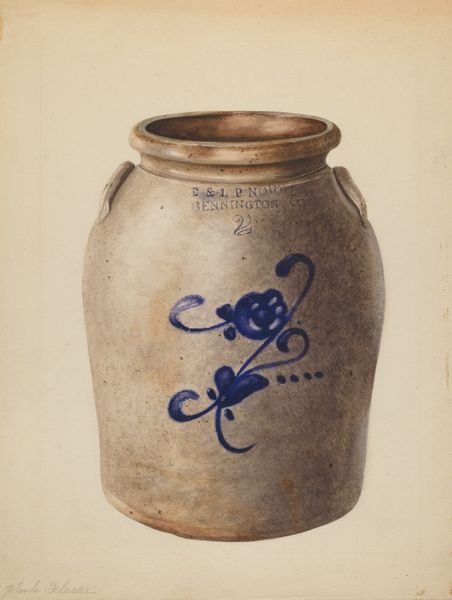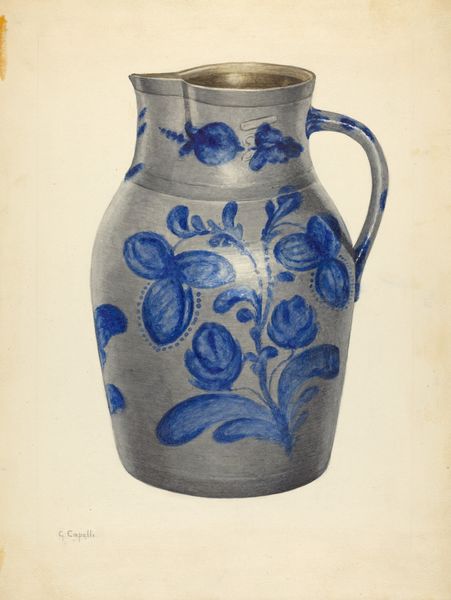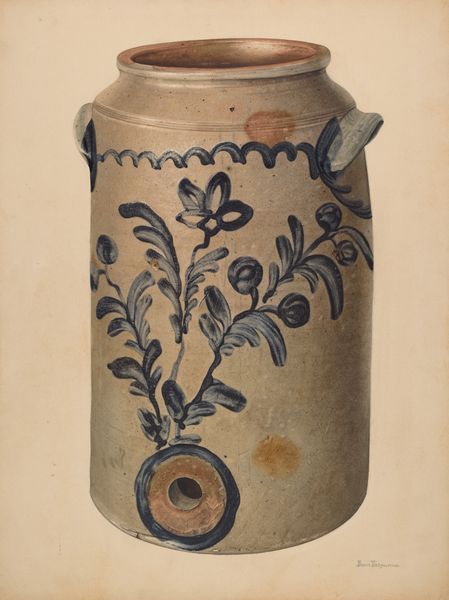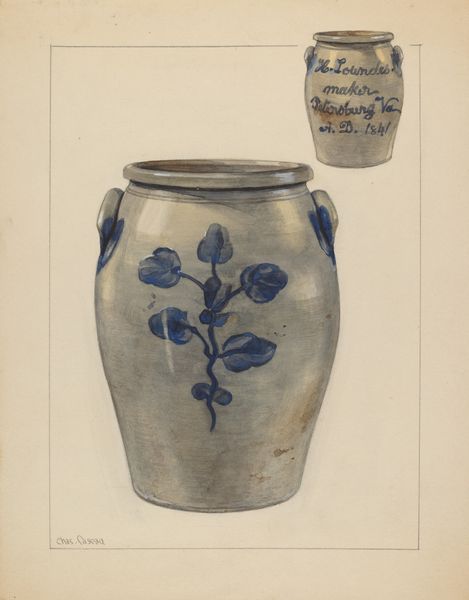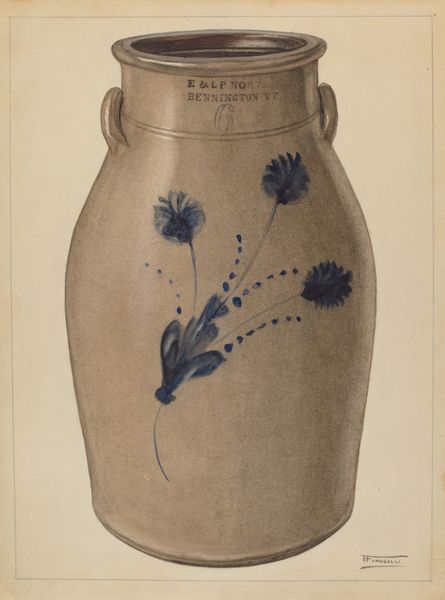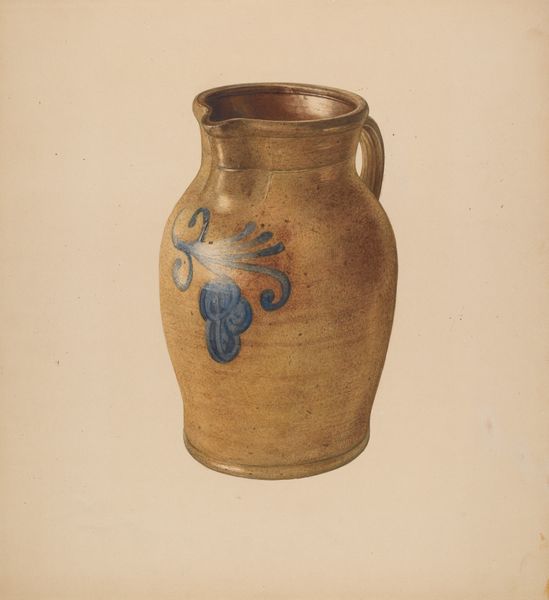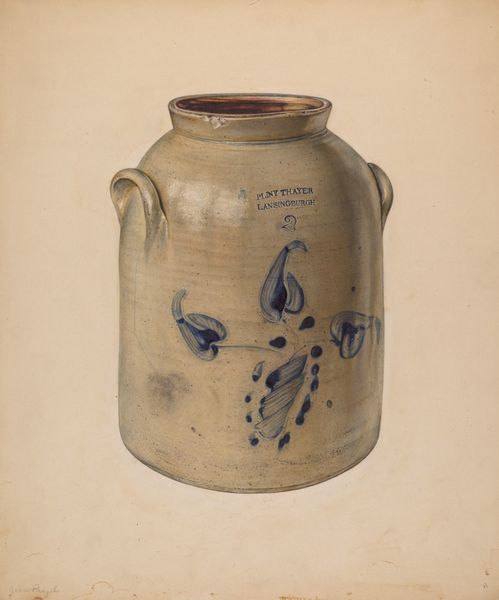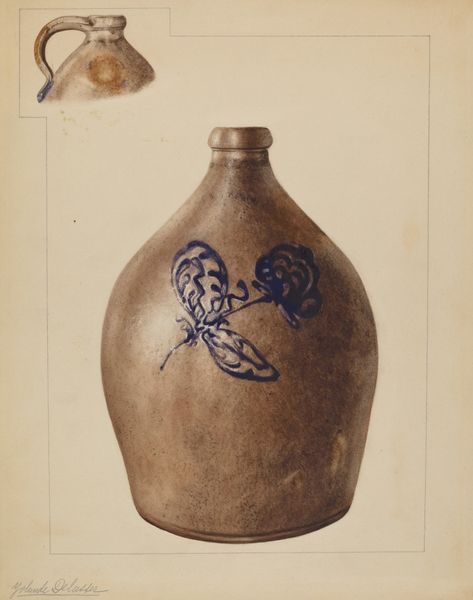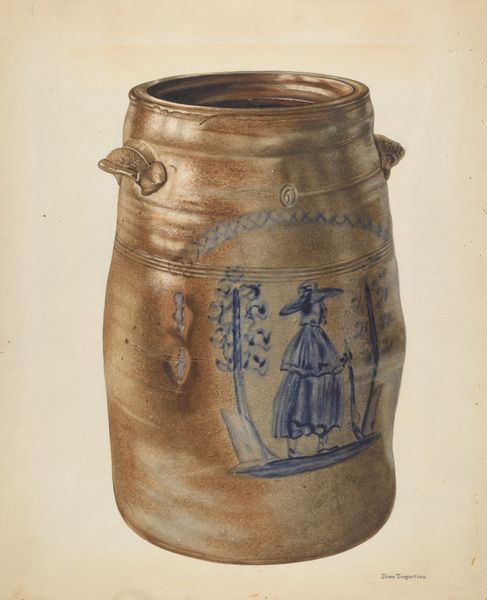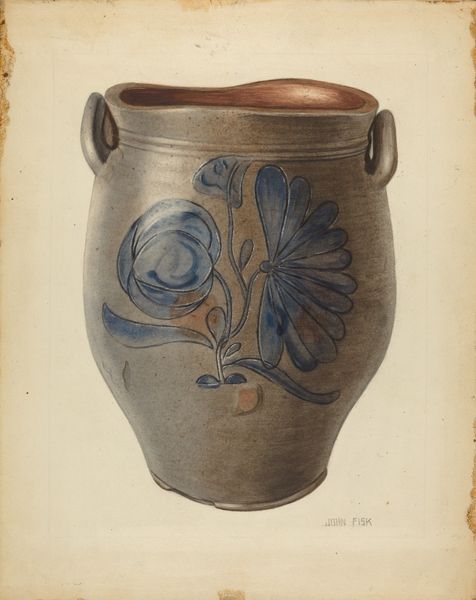
drawing, ceramic, watercolor, earthenware
#
drawing
#
ceramic
#
watercolor
#
earthenware
#
ceramic
#
earthenware
#
watercolor
Dimensions: overall: 51 x 35.3 cm (20 1/16 x 13 7/8 in.)
Copyright: National Gallery of Art: CC0 1.0
Curator: Immediately, I'm struck by its gentle melancholy. The cool greys and blues have such a somber yet soothing tone. Editor: And you’re not wrong to note the artist’s muted palette. The work before us, “Five Gallon Churn,” was created around 1938 by Clyde L. Cheney, using watercolor to depict a utilitarian object fashioned from ceramic. This work is a drawing, not the actual earthenware churn it depicts, emphasizing labor and its place in everyday American life. Curator: That context—labor—is crucial. We are seeing the representation of an object linked intimately to the working class, probably rural. Consider the gendered dimension: were women, particularly in rural areas, more likely to use these churns regularly? That labour remains largely invisible. Editor: Absolutely. The materiality is significant. It’s a common vessel, mass-produced—reflected, perhaps, in the almost industrial look of the repeating floral patterns. Yet it’s made by hand using a craft-based process. Cheney has represented its very being by a simple color palette, showing how the functional intertwines with artistry and even industrial labor of that era. Curator: The floral decorations also offer another layer, don't they? This humble churn is being elevated to a status beyond its sheer function, revealing cultural and perhaps class-based aspirations. What did it mean to adorn something purely practical in this way? How might rural folk be subverting mainstream power? Editor: Well, I see that more as an efficient production process. Applying those minimal but decorative blue flourishes. But I agree the function merges the aesthetic to blur a presumed gap between utilitarian and luxury items and high art. Curator: Examining an object such as this through intersecting lenses of class, labor, and gender enriches its understanding—revealing unseen dialogues and silences. Editor: Indeed. Whether we consider material history or socioeconomic contexts, an apparently ordinary watercolor can reveal complex relationships around labor, artistic creation, and mass-produced objects.
Comments
No comments
Be the first to comment and join the conversation on the ultimate creative platform.
